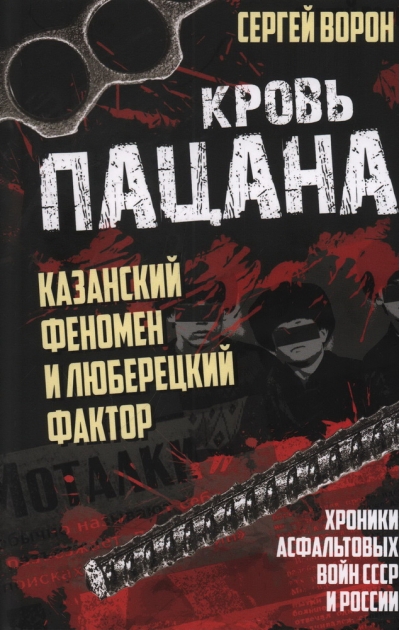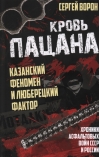Blood of a Boy. The Kazan Phenomenon and the Lyubertsy Factor. Chronicles of the "Asphalt" Wars of the USSR and Russia
14.99 €
The only thing available 1
The "Kazan phenomenon" became known only thanks to the Soviet press and documentary films, which used their example to raise the issue of the flourishing of youth street crime in the country in the 1980s.
Books by Lyubov Ageyeva "Kazan Phenomenon: Myth and Reality" and Robert Garayev "The Word of a Patsan. Criminal Tatarstan 1970-2010s" and of course the brilliant series by Zhora Kryzhovnikov "The Word of a Patsan. Blood on the pavement" immerse us in the era of global geopolitical catastrophe. The premonition of the destruction of the USSR, the ideological hypocrisy of the Soviet elite, the lack of an idea of tomorrow brought young people together in collectives and groups with their own rules of life and code of honor. Such movements took place not only in Kazan. A resident of any major city of the USSR, who knows well the history of his native land, can easily dispute the fact that the "Luberians" and "Kazans" were the first fighters "for asphalt". After the first mention of the term "phenomenon" in the periodical press, such groups immediately appeared in more than forty cities of the Soviet Union. Who was the first has long been irrelevant. What is important is the fact that "motalki," "raids," and "walks" have become part of the history of many cities, a history that has not ended to this day.
Books by Lyubov Ageyeva "Kazan Phenomenon: Myth and Reality" and Robert Garayev "The Word of a Patsan. Criminal Tatarstan 1970-2010s" and of course the brilliant series by Zhora Kryzhovnikov "The Word of a Patsan. Blood on the pavement" immerse us in the era of global geopolitical catastrophe. The premonition of the destruction of the USSR, the ideological hypocrisy of the Soviet elite, the lack of an idea of tomorrow brought young people together in collectives and groups with their own rules of life and code of honor. Such movements took place not only in Kazan. A resident of any major city of the USSR, who knows well the history of his native land, can easily dispute the fact that the "Luberians" and "Kazans" were the first fighters "for asphalt". After the first mention of the term "phenomenon" in the periodical press, such groups immediately appeared in more than forty cities of the Soviet Union. Who was the first has long been irrelevant. What is important is the fact that "motalki," "raids," and "walks" have become part of the history of many cities, a history that has not ended to this day.
See also:
- All books by the publisher
- All books by the author



















